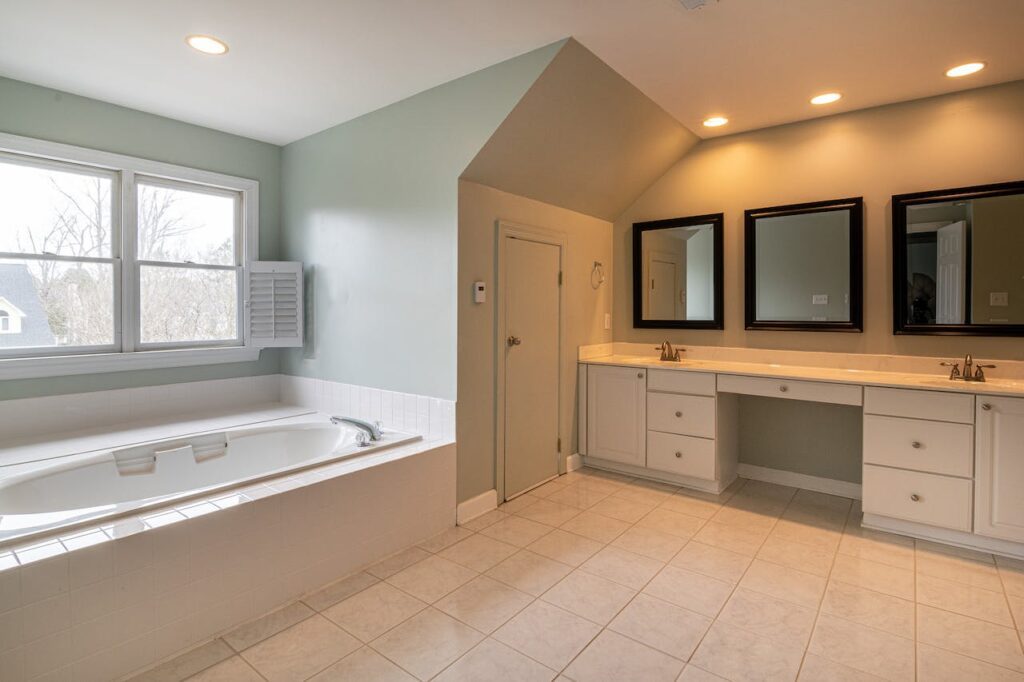Did you know that up to 30% of a building’s energy consumption is influenced by its floor planning? From the layout of rooms to the positioning of windows and doors, every aspect plays a crucial role in determining energy efficiency. Optimizing floor plans can lead to significant reductions in energy usage, resulting in cost savings and environmental benefits.
Efficient floor planning not only enhances natural lighting and ventilation but also improves the overall comfort and productivity of occupants. By strategically designing spaces to minimize energy waste, buildings can operate more sustainably and reduce their carbon footprint.
The Role of Floor Planning in Energy Efficiency
Layout Influence
Different floor plans have varying impacts on energy consumption in homes. For instance, open-concept designs often result in better airflow and natural light utilization, reducing the need for artificial lighting and heating.
Heating/Cooling Efficiency
The layout design directly affects the efficiency of heating and cooling systems. Homes with a well-thought-out floor plan can benefit from improved insulation, reduced heat loss, and optimized air circulation, leading to lower energy usage for temperature control.
Strategic Planning Importance
Residential floor plans play a crucial role in maximizing energy savings. By strategically placing rooms, windows, and doors, homeowners can enhance natural ventilation, minimize heat gain or loss, and utilize daylight effectively, ultimately reducing energy consumption.
How Open Floor Plans Affect Energy Efficiency
Energy Usage Impact
Open floor plans significantly impact energy efficiency compared to traditional layouts. The absence of walls in open spaces allows for better airflow and natural light, reducing the need for artificial lighting and heating.
Advantages and Challenges
Open floor plans promote a sense of spaciousness and connectivity, enhancing comfort and productivity. However, this design can pose challenges in maintaining optimal temperatures throughout the space due to the lack of barriers.
Role in Energy Management
Open floor plans play a crucial role in both facilitating and hindering energy-efficient practices. They enable better air circulation, which can reduce the reliance on air conditioning systems, lowering energy consumption. Conversely, the absence of walls can lead to heat loss in colder climates, requiring more heating to maintain comfort levels.
Advantages of Open Floor Plans
Natural Light
Open floor plans maximize natural light, reducing the need for artificial lighting and lowering energy consumption. The ample sunlight that penetrates through large windows creates a bright and inviting space.
The increased natural light not only enhances the aesthetics of the area but also positively impacts energy efficiency. By utilizing daylight, occupants can reduce their reliance on electric lighting during daylight hours.
Uniform Temperature Distribution
One significant advantage of open floor plans is the promotion of uniform temperature distribution throughout the space. This leads to more efficient heating and cooling, as the air circulates freely without obstruction.
In traditional floor plans with separate rooms, temperature control can be challenging, often resulting in uneven heating or cooling. In contrast, open spaces facilitate better airflow and heat distribution, ensuring a comfortable environment without overworking HVAC systems.
Improved Air Circulation
Another key benefit of open floor plans is the enhanced air circulation within the space. With fewer walls and partitions restricting airflow, fresh air moves more freely throughout the area.
This improved air circulation not only contributes to a healthier indoor environment but also reduces the need for extensive mechanical ventilation. By relying more on natural ventilation, occupants can decrease their dependence on HVAC systems, leading to energy savings.
Disadvantages of Open Floor Plans
Larger Spaces
Open floor plans can lead to challenges due to larger spaces that require more energy for climate control. With fewer barriers, closed rooms are eliminated, making it harder to regulate temperature and airflow efficiently. This can result in increased energy consumption for heating and cooling.
Reduced Thermal Mass
In open floor plans, the separate rooms with walls and doors are replaced by expansive areas. This design often leads to reduced thermal mass, impacting the building’s ability to retain heat or cool air. As a result, the space may experience temperature fluctuations, requiring more energy to maintain a comfortable environment.
Excessive Solar Gain
Large overhangs and windows in open floor plans can cause excessive solar gain, leading to higher cooling costs. The excessive sunlight entering through these openings can raise the indoor temperature significantly, especially during hot seasons. As a consequence, the reliance on air conditioning systems increases, contributing to elevated energy consumption.
Tips to Improve Energy Efficiency of Open Floor Plans
Shading Solutions
Incorporate shading solutions to mitigate heat gain during summer months. Using features like awnings, blinds, or curtains can significantly reduce the amount of heat entering your home. By blocking direct sunlight, these solutions help maintain a cooler indoor temperature, reducing the need for excessive air conditioning.
High-Performance Windows
Consider investing in high-performance windows to enhance insulation and reduce energy loss. These windows are designed with advanced materials that provide better thermal resistance, preventing heat transfer between the interior and exterior of your home. Double or triple-pane glass options are particularly effective in minimizing heat loss during colder months.
Placement of Thermal Mass Materials
When designing an efficient home plan, pay attention to the placement of thermal mass materials. Incorporating materials like concrete, brick, or tile in areas exposed to sunlight can help regulate indoor temperatures. These materials absorb heat during the day and release it at night, stabilizing the overall temperature within your home without relying heavily on heating or cooling systems.
Pros:
- Enhanced comfort: By implementing these energy-efficient strategies, you can create a more comfortable living environment throughout the year.
- Cost savings: Improving energy efficiency can lead to lower utility bills by reducing the amount of energy required for heating and cooling.
- Environmental impact: By reducing energy consumption, you can minimize your carbon footprint and contribute to a more sustainable lifestyle.
Cons:
- Upfront costs: While investing in energy-efficient upgrades may lead to long-term savings, there can be initial expenses associated with purchasing and installing these features.
- Maintenance requirements: Some energy-efficient solutions may require regular maintenance to ensure optimal performance over time.

Integrating Natural and Artificial Light
Maximizing Daylighting
Improved natural lighting plays a crucial role in enhancing energy efficiency within a space. By strategically positioning windows and skylights, natural light can illuminate areas effectively, reducing the need for artificial lighting. This not only decreases energy consumption but also creates a more comfortable and inviting atmosphere.
Incorporating natural light into the design of a building involves considering factors such as orientation, window size, and shading devices. By optimizing these elements, it is possible to maximize the amount of natural light entering the space while minimizing heat gain or loss depending on the climate. This approach not only improves energy efficiency but also promotes a connection with the outdoors.
Balancing Natural and Artificial Lighting
Achieving a harmonious balance between natural light sources and artificial lighting needs is essential for energy efficiency. While natural light provides numerous benefits, including reducing electricity consumption and enhancing well-being, there are times when additional lighting is required. Utilizing energy-efficient lighting fixtures and controls can help minimize energy use without compromising illumination levels.
To optimize energy efficiency based on occupancy patterns, integrating smart lighting systems is highly recommended. These systems can adjust lighting levels according to the presence of individuals in a room, ensuring that energy is not wasted on illuminating unoccupied spaces. By combining natural light with intelligent artificial lighting solutions, it is possible to create a sustainable and efficient lighting environment.
Smart Lighting Systems
Implementing smart lighting systems offers several advantages in terms of energy efficiency and user comfort. These systems can be programmed to respond to specific needs, such as adjusting lighting levels based on the time of day or task being performed. Sensors can detect natural light levels and automatically dim or switch off artificial lights when sufficient natural light is available.
Pros:
- Reduces energy consumption
- Enhances user comfort
- Allows for customization based on occupancy patterns
Cons:
- Initial installation costs may be higher
- Requires maintenance and occasional updates
Shading Devices for Energy Efficiency
Types of Shading Devices
Shading devices play a crucial role in enhancing home energy efficiency. These devices include ceiling fans, adjustable blinds, and exterior shades. By strategically placing these shading devices, homeowners can effectively reduce the need for excessive air conditioning use, thus lowering energy consumption.
Adjustable blinds and shades allow residents to control the amount of sunlight entering their homes, helping to regulate indoor temperatures. Using ceiling fans in conjunction with shading devices can promote better air circulation, reducing the reliance on air conditioning units and further improving energy efficiency.
Exterior Shading for Solar Heat Gain Reduction
Exterior shading systems are particularly effective in reducing solar heat gain through windows. By installing exterior shades such as awnings or shutters, homeowners can prevent direct sunlight from entering the house during peak daylight hours. This significantly reduces the need for air conditioning to counteract the heat, leading to substantial energy savings over time.
Exterior shading not only minimizes solar heat gain but also helps protect furniture and flooring from sun damage. By creating a barrier between the harsh sunlight and interior spaces, these shading devices contribute to maintaining a comfortable indoor environment without relying heavily on energy-intensive cooling systems.
Benefits of Adjustable Shading Systems
Adjustable shading systems offer dynamic energy management capabilities that cater to varying weather conditions and seasonal changes. These systems allow residents to adapt shading levels based on the angle of the sun and outdoor temperatures, maximizing natural light while minimizing heat gain.
Understanding Thermal Comfort in Spaces
Factors Influencing Thermal Comfort
Indoor spaces are designed to provide occupants with comfort and a pleasant environment. Achieving thermal comfort is crucial for ensuring energy efficiency within buildings. One key factor influencing thermal comfort is air movement. Proper air circulation helps maintain consistent temperatures throughout indoor spaces, contributing to energy savings.
Importance of Humidity Control
In addition to air movement, controlling humidity levels plays a significant role in enhancing thermal comfort. High humidity levels can make indoor spaces feel warmer than they actually are, leading to increased reliance on cooling systems. By managing humidity effectively, occupants can experience improved comfort without excessive energy consumption.
Design Choices for Optimal Thermal Comfort
When considering design choices for optimal thermal comfort, the use of thermal mass is essential. Materials with high thermal mass, such as concrete or brick, can absorb and store heat during the day, releasing it slowly at night to help regulate indoor temperatures. This passive heating and cooling method reduces the need for active heating and cooling systems, thus enhancing energy efficiency.
- Utilizing specific room design parameters, such as maximizing natural light exposure while minimizing direct sunlight, can also contribute to maintaining comfortable temperatures without relying heavily on heating or cooling systems.
- Bedrooms, being areas where occupants spend extended periods, should be designed with adequate ventilation and insulation to ensure optimal thermal comfort without excessive energy usage.
Pros and Cons of Different Design Approaches
Pros:
- Efficient use of thermal mass can lead to reduced energy consumption for heating and cooling.
- Proper humidity control enhances occupant comfort and reduces the need for excessive cooling.
Cons:
- Inadequate consideration of air circulation may result in uneven temperature distribution within indoor spaces.
- Over Reliance on active heating and cooling systems can lead to higher energy bills and environmental impact.
Structural Elements for Energy Savings
Insulation Importance
Insulation plays a crucial role in reducing energy demand by minimizing heat transfer through walls, ceilings, and floors. Proper insulation ensures that less energy is required to maintain a comfortable temperature inside homes.
Insulation materials such as fiberglass, cellulose, and spray foam create a barrier against heat loss during winter and heat gain in summer. By installing adequate insulation, homeowners can significantly lower their heating and cooling costs.
Building Orientation
The orientation of a building impacts its energy efficiency by maximizing natural light exposure and minimizing heat gain. South-facing windows allow for passive solar heating during winter, reducing the need for artificial heating.
Proper building orientation also helps in maximizing ventilation and natural airflow, reducing the reliance on mechanical systems for cooling. By strategically positioning a home, residents can optimize energy usage throughout the year.
Sustainable Materials and Techniques
Incorporating sustainable materials like recycled steel, bamboo flooring, and low VOC paints can contribute to energy savings. These materials are not only environmentally friendly but also energy-efficient in their production and use.
Construction techniques such as prefabrication and modular construction minimize waste and reduce energy consumption during the building process. Using sustainable materials and techniques not only enhances energy efficiency but also promotes a healthier indoor environment.
- Sustainable materials offer longevity and durability, reducing the need for frequent replacements.
- Building orientation impacts natural lighting and reduces the need for artificial lighting during the day.
- Insulation helps maintain consistent indoor temperatures, reducing strain on heating and cooling systems.
Closing Thoughts
In optimizing your floor plan for energy efficiency, consider the layout’s impact on lighting, shading, and thermal comfort. By integrating natural light, utilizing shading devices, and understanding thermal comfort needs, you can enhance energy efficiency in your space. Strategic structural elements play a crucial role in conserving energy. Implement these tips to create a more sustainable and cost-effective environment.
Make informed decisions about your floor plan to maximize energy efficiency and create a comfortable living or working space. By following these guidelines, you can contribute to a greener future while enjoying the benefits of reduced energy costs. Take action today to transform your open floor plan into an energy-efficient haven.
Design Your Perfect Floor Plan with Red White & Blue Construction!
Thinking about redesigning your floor plan? Your search ends here! Embark on an exciting journey to transform your Lafayette, CA home into the living space you’ve always dreamed of. With Red White & Blue Construction, every inch of your floor plan becomes a harmonious blend of beauty and functionality. Imagine innovative layouts that maximize your space’s potential, creating a natural flow that enhances both comfort and style. Whether you’re looking to optimize your current floor plan or dreaming up something entirely new, we’re here to bring your vision to life.
Our stellar reputation across the Bay Area speaks to our unwavering commitment to excellence, precision, and the highest standards of craftsmanship. We’re not just licensed contractors; we’re the creative minds behind your ideal living space. With transparent pricing and a client-first approach, you’re not just planning a floor—you’re laying the foundation for a whole new lifestyle. Choose Red White & Blue Construction and turn your home into a masterpiece. Design Your Perfect Floor Plan and connect with us today!
Disclaimer
The materials available on this website are for informational and entertainment purposes only and not to provide advice. You should obtain advice concerning any particular issue or problem from a professional. You should not act or refrain from acting based on any content included in this site without seeking legal or other professional advice. The information presented on this website may not reflect the most current building developments. No action should be taken in reliance on the information on this website. We disclaim all liability concerning actions taken or not taken based on any or all of the contents of this site to the fullest extent permitted by law.





